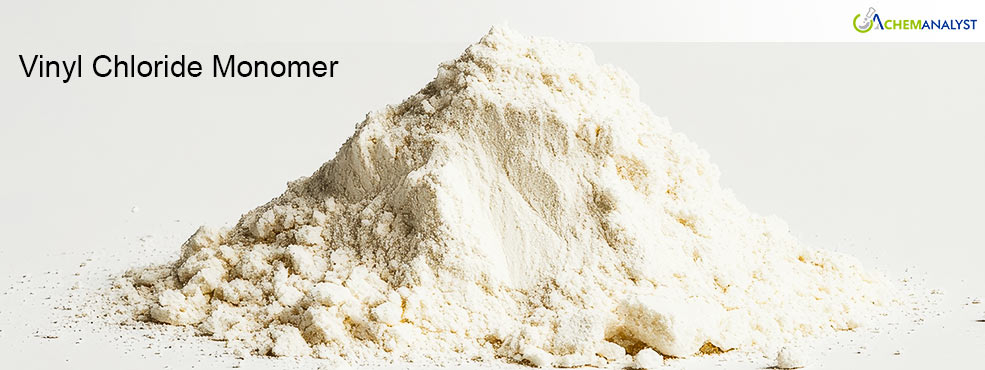Asian VCM Prices Follow Downturn Amid Increased Supply and Tepid Demand
- 01-Nov-2024 11:30 AM
- Journalist: Joseph Dennie
As the second half of October unfolds, Vinyl Chloride Monomer (VCM) prices in Asia have mirrored the softening trajectory of the downstream Polyvinyl Chloride (PVC) market. After a brief increase, VCM prices began to dip again due to lackluster fundamentals, though the pace of decline showed signs of stabilization towards the end of the month.
Market participants in the VCM market reported that the prices of the product were notably pressured by a weakening crude oil market and declining futures in the downstream PVC market. These trends have driven the VCM market downward in Asia, exacerbated by balanced supply-demand dynamics and ample inventory levels. Since October, manufacturers have generally ramped up production, with over half operating at full capacity, resulting in heightened shipment pressure. This supply increase has prompted dealers to lower their offers consistently, with VCM buyer demand remaining limited. Spot procurement remains dominant, and enthusiasm for forward or inquiry-based purchases has waned, adding to an atmosphere of low trading activity.
The VCM feedstock supply chain is further impacted by movements in the upstream calcium carbide and Ethylene market. Moreover, the recent cooling in PVC demand has tempered the calcium carbide price rise, which, though slightly positive this week, has shown signs of slowing. This downstream slump may continue to influence calcium carbide, leading to potential fluctuations in the VCM pricing as well in China.
From September 2024, VCM prices in the Indian market trended downward, largely due to weakened demand from the downstream PVC sector. VCM consumption in the PVC segment remained low, impacted by reduced production costs and softer demand. The construction sector saw muted activity during this period, affected by the monsoon season in India. End-use demand for VCM stayed sluggish, with traders cautious about market conditions and hesitant to restock inventories across Asia. However, at the end of October 2024, the Downstream purchases continued to be primarily influenced by the domestic demand amid the festive season in the country, sustaining a balanced situation between supply and demand amid adequate supplies.
As per ChemAnalyst, the VCM market is anticipated to exhibit intensifying supply-demand pressures from the downstream PVC sector, with high operational rates likely to sustain elevated inventories for PVC producers and the VCM market. The anticipated termination of upward momentum for the upstream prices is likely to prompt limited cost support in the VCM market. The futures market’s recent weakness has further dampened confidence in spot transactions, keeping overall sentiments bearish in the APAC region. Thus, it is expected that the PVC and VCM markets in Asia will remain weak and volatile in the near term.



